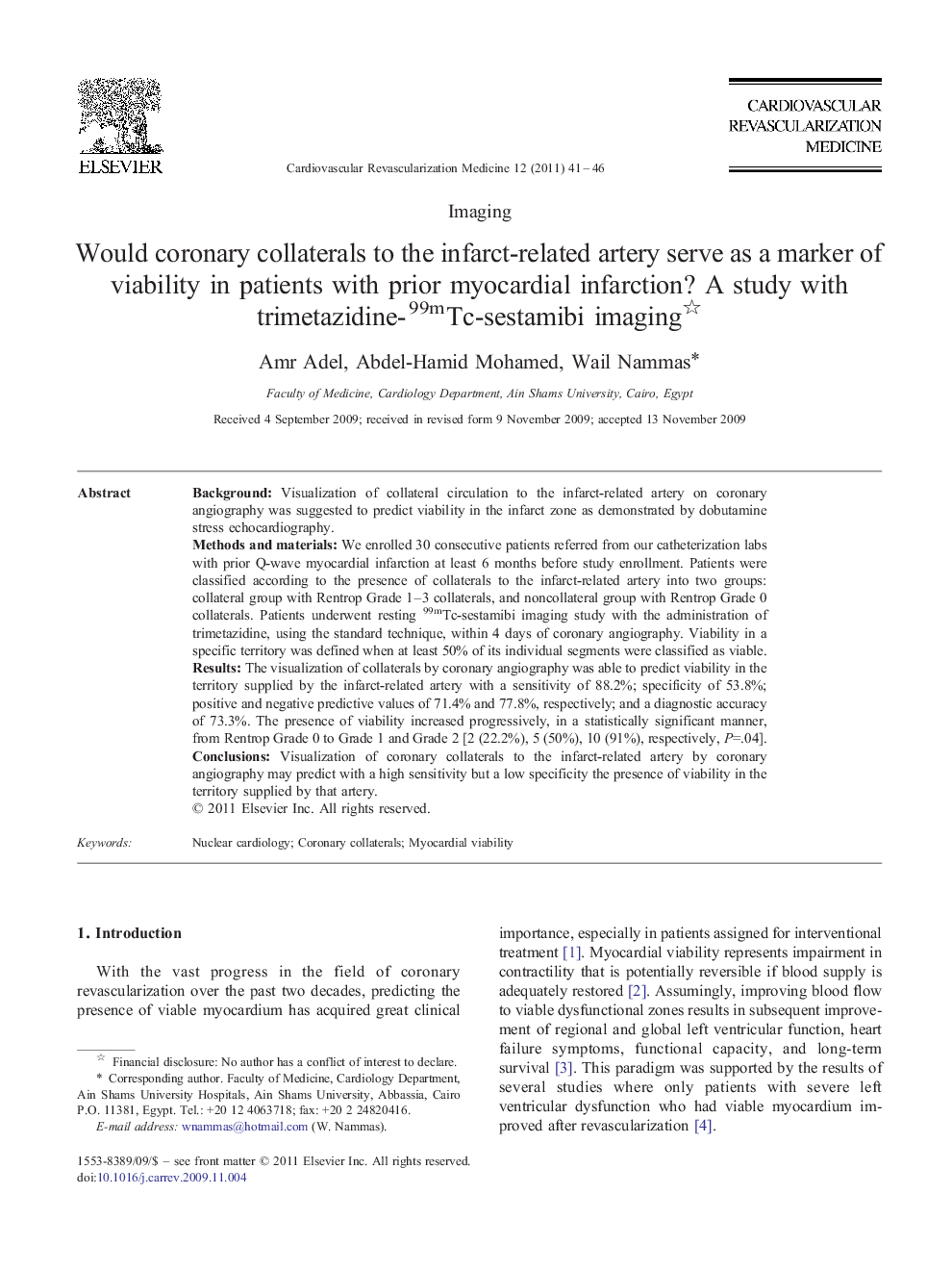| Article ID | Journal | Published Year | Pages | File Type |
|---|---|---|---|---|
| 2837113 | Cardiovascular Revascularization Medicine | 2011 | 6 Pages |
BackgroundVisualization of collateral circulation to the infarct-related artery on coronary angiography was suggested to predict viability in the infarct zone as demonstrated by dobutamine stress echocardiography.Methods and materialsWe enrolled 30 consecutive patients referred from our catheterization labs with prior Q-wave myocardial infarction at least 6 months before study enrollment. Patients were classified according to the presence of collaterals to the infarct-related artery into two groups: collateral group with Rentrop Grade 1–3 collaterals, and noncollateral group with Rentrop Grade 0 collaterals. Patients underwent resting 99mTc-sestamibi imaging study with the administration of trimetazidine, using the standard technique, within 4 days of coronary angiography. Viability in a specific territory was defined when at least 50% of its individual segments were classified as viable.ResultsThe visualization of collaterals by coronary angiography was able to predict viability in the territory supplied by the infarct-related artery with a sensitivity of 88.2%; specificity of 53.8%; positive and negative predictive values of 71.4% and 77.8%, respectively; and a diagnostic accuracy of 73.3%. The presence of viability increased progressively, in a statistically significant manner, from Rentrop Grade 0 to Grade 1 and Grade 2 [2 (22.2%), 5 (50%), 10 (91%), respectively, P=.04].ConclusionsVisualization of coronary collaterals to the infarct-related artery by coronary angiography may predict with a high sensitivity but a low specificity the presence of viability in the territory supplied by that artery.
